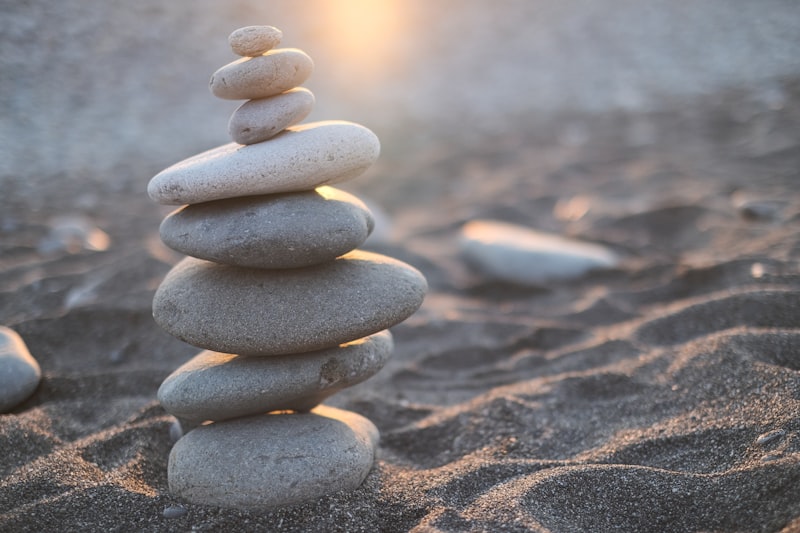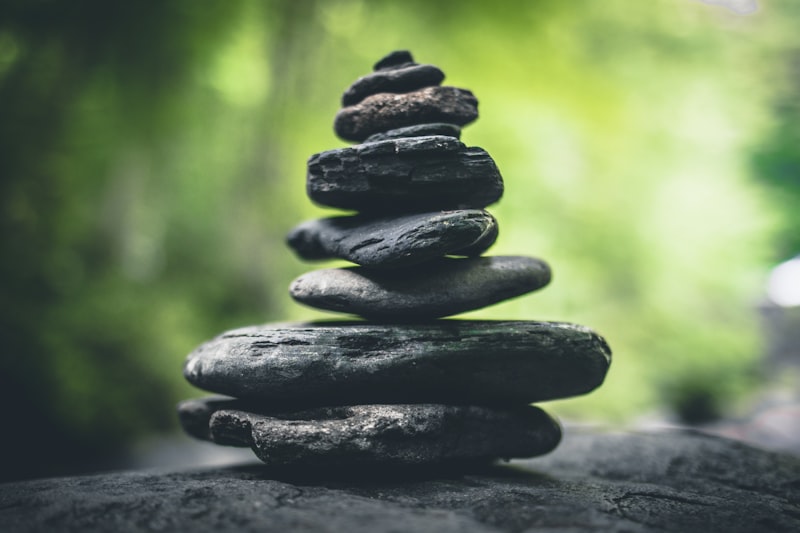Have you ever felt like life’s challenges are pulling you in all directions, leaving you emotionally drained? Imagine if there was a way to regain your inner calm and find stability amidst the chaos. Enter yoga, not just as a physical exercise but as a powerful tool for nurturing emotional balance.

Yoga has been practiced for centuries, originating in ancient India as a holistic approach to harmonizing the mind, body, and spirit. Beyond its physical benefits of strength and flexibility, yoga offers profound effects on our emotional well-being. Through a combination of postures, breathwork, and meditation, yoga cultivates a deep sense of awareness and mindfulness.
One of the key aspects of yoga is its ability to regulate the nervous system. In times of stress, our sympathetic nervous system kicks into high gear, triggering the “fight or flight” response. Yoga helps to activate the parasympathetic nervous system, often referred to as the “rest and digest” response. This shift promotes relaxation, reduces anxiety, and enhances emotional resilience.
Imagine a tree swaying gently in the wind. Just as the tree remains rooted while its branches move with the breeze, yoga teaches us to stay grounded amidst life’s ups and downs. Through regular practice, you develop an inner strength that allows you to navigate through emotional storms with greater ease.

Moreover, yoga encourages us to connect with our breath. Deep, conscious breathing signals to the brain that all is well, calming the mind and soothing turbulent emotions. It’s like having a reset button for your mental state, helping you find clarity and perspective even in the midst of emotional turmoil.
Think of yoga as a sanctuary for your emotions—a sacred space where you can release negativity and invite positivity. As you flow through different poses, you release tension stored in your body, which in turn releases emotional blockages. It’s akin to cleaning out clutter from a room, creating space for peace and serenity to enter.
Mastering Inner Harmony: The Transformative Power of Yoga for Emotional Stability
Yoga, an ancient practice originating in India, has gained immense popularity worldwide not just as a physical exercise but as a powerful tool for achieving emotional stability and inner peace. At its core, yoga is about harmonizing the mind, body, and spirit through a series of postures (asanas), breathing exercises (pranayama), and meditation techniques.
Emotional stability, often elusive in today’s fast-paced world, is a cornerstone of mental well-being. Yoga addresses this by cultivating mindfulness and self-awareness. Through regular practice, individuals learn to observe their thoughts and emotions without judgment, fostering a deeper understanding of their inner workings. This self-awareness is crucial in managing stress, anxiety, and other emotional challenges effectively.
The transformative power of yoga lies in its ability to regulate the body’s stress response. By engaging in slow, deliberate movements and controlled breathing, practitioners activate the parasympathetic nervous system, which induces relaxation and reduces cortisol levels—the hormone associated with stress.
Furthermore, yoga promotes physical health, which is closely intertwined with emotional well-being. Asanas stretch and strengthen muscles, improve flexibility, and enhance circulation, promoting overall vitality. When the body feels strong and healthy, the mind follows suit, contributing to a more balanced emotional state.
Incorporating yoga into daily life doesn’t require hours of practice; even a few minutes of mindful breathing or gentle stretching can make a significant difference. Consistency is key—like any skill, the benefits of yoga compound over time with regular practice. Whether in a bustling city or a serene retreat, the principles of yoga remain universal, offering a pathway to inner peace and emotional resilience.
Ultimately, mastering inner harmony through yoga is a personal journey. It’s about finding what resonates deeply with one’s own needs and aspirations. As individuals explore different yoga styles and techniques, they discover tools to navigate life’s challenges with grace and equanimity. Yoga empowers individuals to cultivate a profound sense of self-awareness, fostering emotional stability that radiates into every aspect of life.
Finding Serenity Through Yoga: Balancing Emotions for a Healthier Mind
When life throws its curveballs, yoga offers a sanctuary where you can recalibrate your emotions. It’s like finding a quiet oasis in the midst of a bustling city—a place where the noise fades away, and you’re left with the soothing rhythm of your breath and the gentle stretch of your muscles.
Yoga encourages us to listen to our bodies and minds with compassion. Through mindful movement and deep breathing, we learn to acknowledge our emotions without judgment. It’s about embracing both the highs and lows, finding a balance that allows us to navigate life’s challenges with grace.

Imagine your emotions are waves in the ocean—sometimes calm and peaceful, other times turbulent and overwhelming. Yoga teaches us to ride these waves skillfully, staying grounded even when the waters are rough. It’s a practice that empowers us to respond to life from a place of strength and inner peace.
As we delve deeper into our yoga practice, we begin to notice subtle shifts in our emotional landscape. The moments of frustration become opportunities for growth, while moments of joy are savored with gratitude. Yoga becomes a powerful tool for cultivating resilience and emotional agility.
Ultimately, finding serenity through yoga is a deeply personal journey. It’s about discovering what brings you peace and learning to nurture that peace amidst life’s constant motion. Through regular practice, we not only strengthen our bodies but also cultivate a resilient mind capable of facing life’s challenges with equanimity.
So, if you’re seeking a path to emotional balance and a healthier mind, consider stepping onto the yoga mat. Allow yourself the gift of presence and self-discovery. Embrace the journey of finding serenity through yoga—it may just lead you to a place of profound inner peace and well-being.
Unlocking Emotional Resilience: How Yoga Shapes Your Inner Strength
Imagine yoga as a sanctuary where one learns to navigate the ebbs and flows of emotions like a skilled sailor on a turbulent sea. Each pose, from the grounding Mountain Pose to the empowering Warrior series, teaches us to stand firm in the face of adversity. It’s not merely about physical flexibility but about bending without breaking, adapting without losing one’s center.
The breath, often referred to as the bridge between body and mind, becomes a powerful tool in cultivating emotional resilience. Through pranayama practices like deep belly breathing or calming alternate nostril breathing, yogis learn to regulate their emotions and stay anchored in the present moment. This awareness of breath extends beyond the mat, becoming a lifeline during stressful situations off the mat.
Moreover, yoga invites practitioners to embrace discomfort with a sense of curiosity rather than fear. In the gentle discomfort of a challenging pose or the stillness of meditation, one discovers that resilience is not just about toughness but about vulnerability and openness. It’s about acknowledging one’s limitations while embracing the potential for growth.
Ultimately, yoga shapes emotional resilience by teaching us to embrace imperfections and uncertainties with compassion and self-awareness. It’s a journey of self-discovery where each practice serves as a stepping stone towards a stronger, more resilient self. As we flow through the asanas and meditations, we unlock the innate resilience that resides within us all, ready to face life’s challenges with grace and courage.
Embrace Calm: Yoga Practices to Enhance Emotional Stability
Ever wondered how some people seem to navigate life’s ups and downs with unwavering calmness? It might just be their secret yoga practice. Yoga isn’t just about stretching or striking impressive poses; it’s a powerful tool to cultivate emotional stability and inner peace.
Imagine starting your day with a few simple stretches and breathing exercises that not only awaken your body but also prepare your mind to tackle whatever comes your way. That’s the essence of yoga for emotional stability—it equips you with the mental resilience to face challenges without feeling overwhelmed.
One of the fundamental practices in yoga for emotional stability is mindful breathing, also known as pranayama. This technique involves consciously regulating your breath to calm the mind and reduce stress. By focusing on deep, rhythmic breathing, you can soothe your nervous system and bring clarity to your thoughts.
Another cornerstone of emotional stability through yoga is meditation. Just a few minutes of daily meditation can make a world of difference in how you respond to stressors. Meditation cultivates mindfulness, allowing you to observe your thoughts without judgment and eventually gain better control over your emotional reactions.
Yoga postures, or asanas, also play a crucial role in enhancing emotional stability. Certain poses are specifically designed to release tension from areas where we hold stress, such as the neck, shoulders, and hips. By practicing these poses regularly, you not only increase flexibility and strength but also create a sense of physical and mental balance.
The beauty of yoga lies in its holistic approach to well-being. It’s not just about physical fitness but about nurturing a harmonious connection between mind, body, and spirit. As you flow through your practice, you’re not just moving your body; you’re recalibrating your entire being to embrace calmness and emotional resilience.
So, whether you’re new to yoga or have been practicing for years, remember that every breath, every stretch, and every moment of mindfulness brings you closer to a state of inner peace. Through yoga, you can discover the profound joy of embracing calm amidst the chaos of everyday life.
From Chaos to Clarity: Yoga Techniques for Emotional Balance
In today’s fast-paced world, finding inner peace amidst chaos is a universal quest. Yoga offers a transformative path from emotional turbulence to serene clarity. By integrating mindful movement, breathwork, and meditation, yoga cultivates emotional balance that resonates deeply within.
Yoga asanas (poses) are not just physical exercises but profound tools for emotional release. Each pose encourages introspection and awareness of body sensations, promoting a harmonious connection between mind and body. For instance, practicing grounding poses like Tree Pose (Vrikshasana) fosters stability and rootedness, calming the mind’s whirlwind.
Conscious breathing techniques in yoga, known as pranayama, are pivotal in regulating emotions. Techniques like Ujjayi breath, where breath is controlled to produce a soothing sound, aid in calming nerves and reducing stress levels. This mindful breathing cultivates a deep sense of relaxation, clearing the mental clutter that clouds emotional clarity.
Central to emotional balance in yoga is meditation, where practitioners learn to observe thoughts without judgment. Mindfulness meditation, practiced regularly, enhances self-awareness and acceptance of emotions, paving the way for inner peace. Visualizations and guided meditations further assist in releasing pent-up emotions, fostering a serene mental landscape.
The beauty of yoga lies in its applicability beyond the mat. Integrating yoga techniques into daily routines empowers individuals to navigate emotional storms with resilience and grace. Whether through a morning asana sequence or a brief breathing exercise during stressful moments, these practices reinforce emotional equilibrium throughout the day.
By embracing yoga’s holistic approach to emotional well-being, individuals embark on a journey from chaos to clarity. Through mindful movement, breathwork, and meditation, yoga not only nurtures physical health but also cultivates profound emotional resilience. It offers a sanctuary where the storms of emotions subside, revealing the clarity and tranquility inherent within every individual.
This journey towards emotional balance is not just about finding peace but about rediscovering the innate clarity that resides within us all.
Frequently Asked Questions
Can yoga help reduce stress and anxiety?
Discover how yoga can effectively reduce stress and anxiety through a holistic approach combining physical postures, breathing exercises, and meditation techniques.
What breathing techniques in yoga aid in emotional regulation?
Discover effective breathing techniques in yoga that promote emotional regulation. Learn how practices like diaphragmatic breathing, alternate nostril breathing, and ujjayi breath can calm the mind and balance emotions, fostering a sense of inner peace and mental clarity.
What are the best yoga poses for improving emotional stability?
Discover effective yoga poses that enhance emotional stability. Learn simple yet powerful techniques to calm the mind and improve emotional resilience through targeted yoga poses.
How often should I practice yoga to enhance emotional balance?
Discover how often you should practice yoga to improve emotional balance. Learn about the ideal frequency that optimizes mindfulness and inner peace.
How does yoga promote overall emotional well-being?
Discover how yoga enhances emotional well-being through mindful breathing, meditation, and physical postures that reduce stress hormones and promote relaxation, fostering a balanced state of mind.


